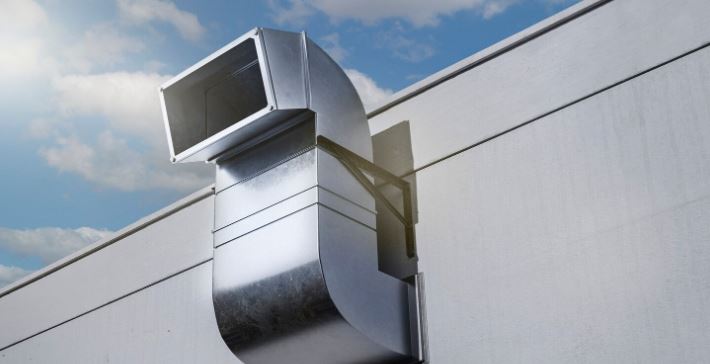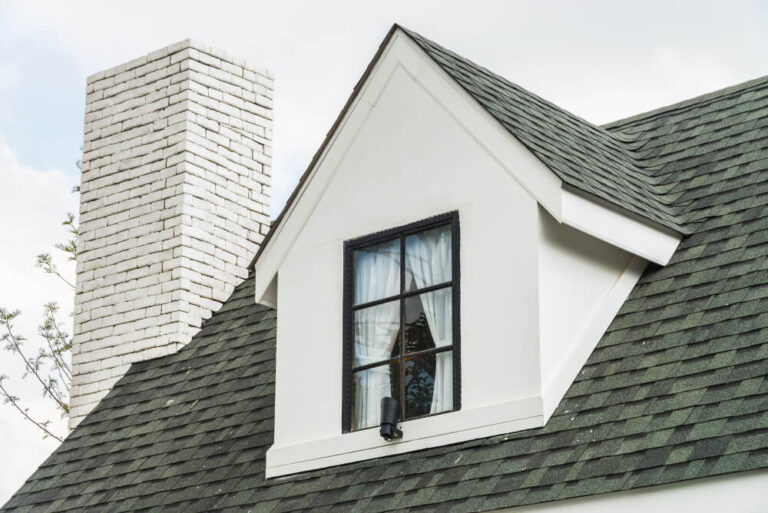Understanding Your Insurance Coverage
What Insurance Typically Covers
Homeowners insurance generally covers roof replacement when damage results from covered perils. Understanding what’s included in your policy is the first step to a successful claim.
Commonly Covered Perils:
- Wind and hail damage: The most common covered cause
- Fire and smoke damage: Including wildfire
- Falling objects: Trees, debris from storms
- Weight of snow or ice: Collapse or damage from accumulation
- Vandalism: Intentional damage by others
- Lightning strikes: Direct hits or resulting fire
- Some water damage: From specific sudden events (not all water damage)
What Insurance Typically Does NOT Cover
Common Exclusions:
- Normal wear and tear: Age-related deterioration
- Lack of maintenance: Neglected repairs leading to damage
- Gradual damage: Slow leaks, rot over time
- Improper installation: Faulty workmanship
- Certain natural disasters: Floods, earthquakes (require separate coverage)
- Cosmetic damage: That doesn’t affect function
- Damage below deductible: You pay out-of-pocket
Policy Types and Coverage Levels
| Coverage Type | What It Means | Impact on Claims |
|---|---|---|
| Replacement Cost Value (RCV) | Pays full cost to replace with new materials | Best coverage, no depreciation |
| Actual Cash Value (ACV) | Replacement cost minus depreciation | Lower payout, considers roof age |
| Repair Cost Coverage | Only covers repairs, not full replacement | Limited coverage for patches |
| Scheduled Coverage | Specific amount listed for roof | May have separate limits |
Step-by-Step Process to File a Successful Claim
Step 1: Assess and Document the Damage
Initial Documentation Checklist:
- ☐ Take date-stamped photos from multiple angles
- ☐ Video walk-through of all damage
- ☐ Close-up shots of specific damaged areas
- ☐ Interior photos of any leaks or water damage
- ☐ Document damaged personal property
- ☐ Save weather reports from the date of damage
- ☐ Get neighbor statements if their property was damaged too
Step 2: Review Your Insurance Policy
Before filing a claim, thoroughly review your policy to understand:
- Coverage limits: Maximum amount insurance will pay
- Deductibles: Your out-of-pocket responsibility
- Exclusions: What’s specifically not covered
- Claim deadlines: Time limits for filing
- Required procedures: Specific steps you must follow
Step 3: Contact Your Insurance Company
Information to Have Ready:
- Policy number and coverage details
- Date and cause of damage
- Description of all damage
- Contact information for witnesses
- Police report number (if applicable)
Step 4: Get a Professional Roof Inspection
- Identifies all damage, including hidden issues
- Provides detailed written report
- Offers repair vs. replacement recommendations
- Can serve as expert testimony for your claim
- May find damage you missed
Step 5: Meet with the Insurance Adjuster
The insurance company will send an adjuster to inspect your roof. This meeting is crucial for your claim’s success.
Adjuster Meeting Best Practices:
- Be present: Don’t let adjuster inspect alone
- Have your contractor present: They can point out damage adjuster might miss
- Provide documentation: Share your photos and inspection reports
- Take notes: Document what adjuster says and photographs
- Ask questions: Understand their assessment fully
- Get everything in writing: Request written report
Step 6: Obtain Multiple Repair Estimates
| Estimate Component | What to Include | Why It Matters |
|---|---|---|
| Scope of Work | Detailed list of all repairs/replacement needed | Ensures nothing is missed |
| Materials | Type, quality, quantity, brand | Matches insurance pricing |
| Labor | Hours, rates, number of workers | Justifies total cost |
| Additional Work | Code upgrades, structural repairs | May be covered as necessary |
| Timeline | Start and completion dates | Shows urgency of repairs |
Common Reasons Claims Are Denied (And How to Avoid Them)
1. Pre-Existing Damage or Wear and Tear
How to Counter:
- Provide proof of roof’s good condition before the event
- Show previous inspection reports
- Document regular maintenance
- Highlight sudden nature of damage
2. Missed Deadlines
How to Avoid:
- File immediately after discovering damage
- Document when damage was first noticed
- If delayed, explain valid reasons
- Show you acted promptly once aware
3. Insufficient Documentation
Solution:
- Comprehensive photo/video evidence
- Professional inspection reports
- Weather reports confirming storm
- Witness statements
- Maintenance records
4. Policy Exclusions
Prevention:
- Know your policy exclusions
- Identify covered concurrent causes
- Focus on covered aspects of damage
- Consider additional coverage for future
How to Appeal a Denied Claim
The Appeals Process
- Request detailed denial explanation
- Get specific policy provisions cited
- Understand exact reasoning
- Gather additional evidence
- New photos or expert opinions
- Engineering reports if needed
- Historical weather data
- Write formal appeal letter
- Address each denial reason
- Include new evidence
- Reference policy language
- Request re-inspection
- With different adjuster
- Have your contractor present
- Escalate if necessary
- Insurance company management
- State insurance commissioner
- Independent appraisal
- Legal consultation
Working with Roofing Contractors and Public Adjusters
Benefits of Contractor Assistance
- Damage identification: Trained to spot all issues
- Documentation help: Proper reports for insurance
- Adjuster meetings: Advocate for full repairs
- Code requirements: Ensure compliance included
- Supplemental claims: Help identify missed items
When to Consider a Public Adjuster
- Large or complex claims
- Disputed coverage amounts
- Feeling overwhelmed by process
- Language barriers or disabilities
- Significant undervaluation by insurer
Maximizing Your Insurance Settlement
Strategies for Full Coverage
- Document everything meticulously
- Create organized file system
- Keep all communications written
- Log all phone calls
- Understand replacement vs. repair
- When damage exceeds 25-30%, replacement often warranted
- Factor in matching issues
- Consider code upgrades required
- Don’t accept first offer immediately
- Review carefully with contractor
- Identify missing items
- Request itemized breakdown
- Submit supplemental claims
- For damage discovered during work
- Code-required upgrades
- Matching existing materials
Understanding Depreciation and Recoverable Costs
- Initial payment: Actual Cash Value (replacement cost minus depreciation)
- You complete repairs with licensed contractor
- Submit proof of completion and costs
- Insurance pays remaining depreciation amount
- You receive full replacement cost value
Timeline Expectations
| Stage | Typical Timeframe | Your Actions |
|---|---|---|
| Initial claim filing | Within 24-72 hours of damage | Call insurer, document damage |
| Adjuster inspection | 3-7 days after filing | Prepare documentation, be present |
| Initial decision | 7-14 days after inspection | Review carefully, get contractor input |
| Appeals (if needed) | 30-60 days | Submit additional evidence |
| Payment processing | 5-10 days after approval | Schedule repairs promptly |
| Depreciation recovery | After work completion | Submit completion documents |
Frequently Asked Questions
Q: Will filing a claim increase my insurance rates?
A: Possibly, but not always. Single claims for covered perils (like storm damage) typically have less impact than multiple claims. Rates are more likely to increase with multiple claims, at-fault claims, or in areas with frequent disasters. Some insurers offer claim-free discounts that might be affected.
Q: How old can roof damage be and still be covered?
A: Insurance covers sudden, accidental damage regardless of when discovered, but you must file promptly after discovery. However, proving damage is recent becomes harder over time. Document any delay in discovery and file immediately upon finding damage.
Q: Can I do the roof repairs myself and keep the insurance money?
A: Most policies require professional repairs to code standards. DIY repairs may void warranties, fail inspections, and create liability issues. With RCV policies, you only receive full payment after proving professional completion.
Q: What if my roof needs to be brought up to current building codes?
A: Many policies include “Ordinance or Law” coverage for code upgrades required during repairs. If not included, you can often add this coverage. Code upgrades might include improved ventilation, ice barriers, or attachment methods.
Q: Should I get my own inspection before calling insurance?
A: Yes, having a professional inspection can help you understand damage extent and validity of a claim. However, don’t delay reporting to insurance if you’re certain of covered damage. Many contractors offer free inspections.
Q: What’s the difference between ACV and RCV policies?
A: ACV (Actual Cash Value) pays replacement cost minus depreciation based on roof age. RCV (Replacement Cost Value) pays full replacement cost, though you may need to complete repairs first to receive the full amount. RCV provides better coverage but costs more.
Q: Can insurance companies cancel my policy for filing a roof claim?
A: Insurers cannot cancel your policy mid-term for filing a legitimate claim. However, they may choose not to renew at policy end, especially with multiple claims. Non-renewal is more likely in high-risk areas or with repeated claims.
Q: What if the adjuster’s estimate is much lower than contractor estimates?
A: Request detailed breakdown from adjuster, share contractor estimates, point out missed items, request re-inspection with your contractor present, and invoke appraisal clause if needed. Don’t accept inadequate settlements.
Q: Is hail damage always covered by insurance?
A: Hail damage is typically covered under standard policies as storm damage. However, some insurers in hail-prone areas may exclude it, require separate deductibles, or only offer limited coverage. Check your specific policy.
Q: How long do I have to complete repairs after claim approval?
A: Most policies require repairs within a “reasonable time,” often 1-2 years. Check your policy for specific deadlines. Delays may affect your ability to recover depreciation on RCV policies. Document any valid reasons for delays.
Conclusion: Successfully Navigating the Insurance Claim Process
Getting insurance to pay for roof replacement requires preparation, documentation, and persistence. Success depends on having legitimate covered damage, understanding your policy, and following proper procedures throughout the claims process.
Key Success Factors:
- Act quickly: File claims promptly and document thoroughly
- Know your coverage: Understand policy terms and limitations
- Document everything: Photos, reports, communications
- Get professional help: Inspections and contractor assistance
- Be persistent: Appeal if wrongly denied
- Stay organized: Keep detailed records throughout
- Communicate clearly: Written documentation of all interactions
- Know your rights: Understand appeals and appraisal options
Remember, insurance is designed to protect you from sudden, accidental damage. When you have a legitimate claim, you’re entitled to fair compensation under your policy terms. Don’t let initial denials or low estimates discourage you from pursuing the coverage you’ve paid for. With proper documentation and persistence, most valid claims can be successfully resolved.
Work with reputable roofing contractors who understand the insurance process, and don’t hesitate to seek professional help if you feel overwhelmed or unfairly treated. Your home is likely your largest investment—ensuring proper roof replacement protects both your property and financial well-being.






